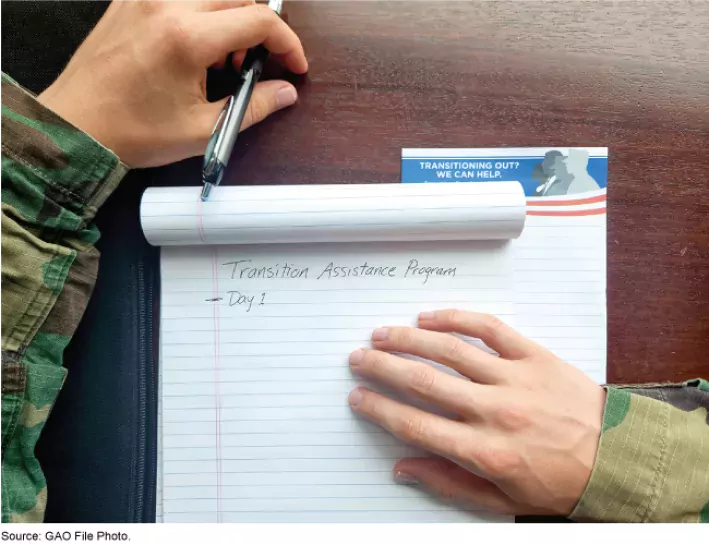For Veterans Day—Is A Key Program Meant to Help Veterans Transition to Civilian Life Reaching its Audience?
While in the military, U.S. service members gain important skills and experience. But they sometimes find it difficult to leverage these skills or have their experience recognized by other employers after leaving military service. Each year, around 200,000 service members leave the military and navigate this difficult transition. And there are programs meant to help them.
In recognition of Veterans Day (Saturday), today’s WatchBlog post looks at our work on a key program meant to help veterans and service members transition to civilian life—the Transition Assistance Program—and ways to improve this effort.
Image

Support does not always reach service members and veterans
The Transition Assistance Program (TAP), which is run by the Department of Defense, is mandatory for those leaving service and is meant to help participants choose a new career, pursue higher education, or find a job after service.
TAP tailors support to individuals’ needs based on how prepared they are to enter civilian life. It provides counseling, employment assistance, and information on federal veterans’ benefits to service members who are planning to leave the military.
More than half a million service members are expected to participate in TAP over the next few years. But in May, we testified to Congress that the program may not be reaching those who need it the most. Specifically, we found that nearly 25% of those who needed maximum support did not attend a mandatory 2-day TAP class. And most service members did not start the program at least 1 year before leaving service, as normally required.
2-Day Class Attendance by Tier, for Active-Duty Service Members Who Left the Military between April 1, 2021 and March 21, 2022
Image

All required TAP support, such as counselling and training, are standard across military installations, regardless of their location or size. However, we found that some service members might lack access to TAP because their installations are in remote areas and are small. Officials at these installations said service members may also have limited employment opportunities in these remote or more rural local areas, which can affect their networking opportunities and ability to gain post-military employment. Additionally, small installations may not have enough service members to hold a class, so they have to cancel or postpone it. The service member then must wait for the next offering or take the class at another installation or virtually.
What actions are needed to better help service members?
Since December 2022, we have made eight recommendations to DOD about how to improve efforts to help service members and new veterans transition to civilian life. These recommendations include using information available on TAP’s performance to improve attendance for those service members that require maximum support.
Learn more about our work on TAP and our recommendations for DOD by checking out our latest report and key issue page on Helping Service Members Transition Back to Civilian Life. We have also reported about other veterans’ issues. You can learn more about that work by checking out our Veterans topic page.
- GAO’s fact-based, nonpartisan information helps Congress and federal agencies improve government. The WatchBlog lets us contextualize GAO’s work a little more for the public. Check out more of our posts at GAO.gov/blog





